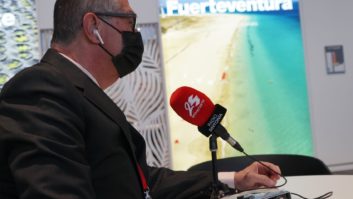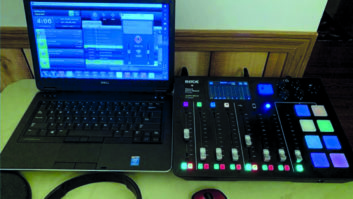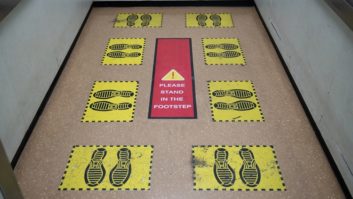Data Routers
Jul 1, 2001 12:00 PM, By Kevin McNamara, CNE
Networks attached to the Internet are most likely connected by a routing switcher. By definition, a routing switcher is a device that connects two or more networks. For example, if your station is connected directly to some form of Internet access, such as a Frame Relay, T1, DSL, cable, etc., or perhaps directly to the corporate office, the network router will form the demarcation point between your internal network and the outside network connection.
The term wide area network (WAN) describes a model where groups of local networks, located in different areas, are connected together. Other terms, such as Enterprise or Campus networks, also considered forms of WANs, typically characterize the global (or local) interconnection of networks within a company.
The Internet comprises a series of interconnected routers that permit a user to access any available server in the world. Web browsers accept a Web address as a name, in the form of http://www.yoursite.com or as an address such as http://123.456.789.000. Large routing switchers connected to the Internet pass information to each other regarding the closest path to a specific address. The Routing Information Protocol (RIP) established the most efficient path (shortest distance and number of hops) for a source packet to reach its destination; this is similar to what happens when you dial a number on a telephone.
What’s in a name?
You may wonder how a domain name is routed. When you type a domain name into your browser, it is sent over the Internet and read by a Domain Name Server (DNS). The DNS resolves the name into its assigned IP address, which communicates that information to the router.
Routers are used to segment or isolate different networks. Routers function at the Network layer of the OSI model and connect networks that use the same protocols, typically TCP/IP, but will also function with other routable protocols such as IPX. Many will remember a device called the Bridge. In the earlier days of networking, particularly with Ethernet networks, the bridge was used to segment networks. In contrast to a router, the bridge operates at the Media-Access layer that will only work with networks of similar access-methods, such as Ethernet-Ethernet. Routers allow a broader range of control in terms of what can pass through the router and the path that it can take. The current generation of routers provides a high degree of security.
In the case of a WAN, this could mean networks in different buildings or states; however, it can be desirable to isolate networks within a facility. An example would be to isolate the network used for general business from the dedicated network(s) used to serve audio program materials. Ethernet networks use a collision protocol. Data transported through an Ethernet network is broken into small packets of information and transmitted randomly over the Ethernet backbone. If two or more packets transmit at the same time, each device waits a random amount of time and retransmits. The current generation of high-speed Ethernet eliminates some of the latency found in earlier versions, largely due to the use of a full duplex transmission scheme.
If too many devices connected to a common network are presenting a large amount of traffic, network performance can be affected or, in severe cases, stopped. Consider networks that broadcast (or stream) audio/video data over an Ethernet network � in this case, data traffic is almost always present. If another network used for general business functions was also connected to this Ethernet connection, overall network performance would likely be poor. Inserting a properly configured router between the two network servers would isolate the Ethernet traffic. Let’s assume that the traffic department, which normally only has access to the general business server, requires the ability to download program files to the on-air audio playback system. The router can be programmed to allow data from one address to pass through while blocking other traffic.
More than a pretty faceplate
Current routers are �smart� devices. Even the simplest routers provide a high degree of control over how data is handled. Configuring a router can also be challenging, in some cases requiring extensive training and certification. The technology of a router is based on a collection of routing algorithms. The types of algorithms used vary depending on the type and application of the router, but here are a few:
Single-Path routing. Supports a single path to a single destination.
Multipath routing. Permits multiple paths of data to a single location, permitting more efficient data transfer and inherent redundancy.
Flat routing. Operates only in a peer-to-peer mode.
Hierarchical routing. Operates at a higher level, acting like a backbone, i.e. large routers, such as those used by fortune 500 companies; governments and universities form the backbone of the Internet using the hierarchical algorithm to pass address information to each other.
Static routing. Uses fixed table mappings that are established by a network administrator, typically in small networks where traffic is predictable.
Dynamic routing. Builds mapping tables based on traffic within prescribed constraints. The router handles changes in network configurations. Most dynamic routers allow the network administrator to program certain static functions, if necessary.
Intradomain routing. Permits routing only within a particular domain.
Interdomian routing. Allows the router to communicate with other domains.
Link State routing. Allows the router to send part of the information within its routing table to all other routers on an internetwork; also called shortest path fist algorithm.
Distance Vector routing. Allows the router to send as much information as necessary to routers directly adjacent to it.
Host-Intelligent routing. Employs this algorithm and assumes the initiating source will handle all routing tasks and will store and forward packets; also called source routing.
Router-Intelligent routing. Assumes that the initiating source has no information as to the routing of data and will provide the proper routing.
This should provide a fundamental knowledge of network routers. Next month we will look at network switches and hubs.
Kevin McNamara, BE Radio’s consultant on computer technology, is president of Applied Wireless Inc., New Market, MD.
All of the Networks articles have been approved by the SBE Certification Committee as suitable study material that may assist your preparation for the SBE Certified Broadcast Networking Technologist exam. Contact the SBE at (317) 846-9000 or go towww.sbe.orgfor more information on SBE Certification.












